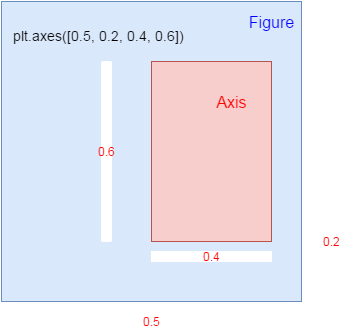pandas.read_csv参数整理
读取CSV(逗号分割)文件到DataFrame
也支持文件的部分导入和选择迭代
参数:
filepath_or_buffer : str,pathlib。str, pathlib.Path, py._path.local.LocalPath or any object with a read() method (such as a file handle or StringIO)
可以是URL,可用URL类型包括:http, ftp, s3和文件。对于多文件正在准备中
本地文件读取实例:://localhost/path/to/table.csv
sep : str, default ‘,’
指定分隔符。如果不指定参数,则会尝试使用逗号分隔。分隔符长于一个字符并且不是‘\s+’,将使用python的语法分析器。并且忽略数据中的逗号。正则表达式例子:’\r\t’
delimiter : str, default None
定界符,备选分隔符(如果指定该参数,则sep参数失效)
delim_whitespace : boolean, default False.
指定空格(例如’ ‘或者’ ‘)是否作为分隔符使用,等效于设定sep=’\s+’。如果这个参数设定为Ture那么delimiter 参数失效。
在新版本0.18.1支持
header : int or list of ints, default ‘infer’
指定行数用来作为列名,数据开始行数。如果文件中没有列名,则默认为0,否则设置为None。如果明确设定header=0 就会替换掉原来存在列名。header参数可以是一个list例如:[0,1,3],这个list表示将文件中的这些行作为列标题(意味着每一列有多个标题),介于中间的行将被忽略掉(例如本例中的2;本例中的数据1,2,4行将被作为多级标题出现,第3行数据将被丢弃,dataframe的数据从第5行开始。)。
注意:如果skip_blank_lines=True 那么header参数忽略注释行和空行,所以header=0表示第一行数据而不是文件的第一行。
names : array-like, default None
用于结果的列名列表,如果数据文件中没有列标题行,就需要执行header=None。默认列表中不能出现重复,除非设定参数mangle_dupe_cols=True。
index_col : int or sequence or False, default None
用作行索引的列编号或者列名,如果给定一个序列则有多个行索引。
如果文件不规则,行尾有分隔符,则可以设定index_col=False 来是的pandas不适用第一列作为行索引。
usecols : array-like, default None
返回一个数据子集,该列表中的值必须可以对应到文件中的位置(数字可以对应到指定的列)或者是字符传为文件中的列名。例如:usecols有效参数可能是 [0,1,2]或者是 [‘foo’, ‘bar’, ‘baz’]。使用这个参数可以加快加载速度并降低内存消耗。
as_recarray : boolean, default False
不赞成使用:该参数会在未来版本移除。请使用pd.read_csv(…).to_records()替代。
返回一个Numpy的recarray来替代DataFrame。如果该参数设定为True。将会优先squeeze参数使用。并且行索引将不再可用,索引列也将被忽略。
squeeze : boolean, default False
如果文件值包含一列,则返回一个Series
prefix : str, default None
在没有列标题时,给列添加前缀。例如:添加‘X’ 成为 X0, X1, …
mangle_dupe_cols : boolean, default True
重复的列,将‘X’…’X’表示为‘X.0’…’X.N’。如果设定为false则会将所有重名列覆盖。
dtype : Type name or dict of column -> type, default None
每列数据的数据类型。例如 {‘a’: np.float64, ‘b’: np.int32}
engine : {‘c’, ‘python’}, optional
Parser engine to use. The C engine is faster while the python engine is currently more feature-complete.
使用的分析引擎。可以选择C或者是python。C引擎快但是Python引擎功能更加完备。
converters : dict, default None
列转换函数的字典。key可以是列名或者列的序号。
true_values : list, default None
Values to consider as True
false_values : list, default None
Values to consider as False
skipinitialspace : boolean, default False
忽略分隔符后的空白(默认为False,即不忽略).
skiprows : list-like or integer, default None
需要忽略的行数(从文件开始处算起),或需要跳过的行号列表(从0开始)。
skipfooter : int, default 0
从文件尾部开始忽略。 (c引擎不支持)
skip_footer : int, default 0
不推荐使用:建议使用skipfooter ,功能一样。
nrows : int, default None
需要读取的行数(从文件头开始算起)。
na_values : scalar, str, list-like, or dict, default None
一组用于替换NA/NaN的值。如果传参,需要制定特定列的空值。默认为‘1.#IND’, ‘1.#QNAN’, ‘N/A’, ‘NA’, ‘NULL’, ‘NaN’, ‘nan’`.
keep_default_na : bool, default True
如果指定na_values参数,并且keep_default_na=False,那么默认的NaN将被覆盖,否则添加。
na_filter : boolean, default True
是否检查丢失值(空字符串或者是空值)。对于大文件来说数据集中没有空值,设定na_filter=False可以提升读取速度。
verbose : boolean, default False
是否打印各种解析器的输出信息,例如:“非数值列中缺失值的数量”等。
skip_blank_lines : boolean, default True
如果为True,则跳过空行;否则记为NaN。
parse_dates : boolean or list of ints or names or list of lists or dict, default False
- boolean. True -> 解析索引
- list of ints or names. e.g. If [1, 2, 3] -> 解析1,2,3列的值作为独立的日期列;
- list of lists. e.g. If [[1, 3]] -> 合并1,3列作为一个日期列使用
- dict, e.g. {‘foo’ : [1, 3]} -> 将1,3列合并,并给合并后的列起名为”foo”
infer_datetime_format : boolean, default False
如果设定为True并且parse_dates 可用,那么pandas将尝试转换为日期类型,如果可以转换,转换方法并解析。在某些情况下会快5~10倍。
keep_date_col : boolean, default False
如果连接多列解析日期,则保持参与连接的列。默认为False。
date_parser : function, default None
用于解析日期的函数,默认使用dateutil.parser.parser来做转换。Pandas尝试使用三种不同的方式解析,如果遇到问题则使用下一种方式。
1.使用一个或者多个arrays(由parse_dates指定)作为参数;
2.连接指定多列字符串作为一个列作为参数;
3.每行调用一次date_parser函数来解析一个或者多个字符串(由parse_dates指定)作为参数。
dayfirst : boolean, default False
DD/MM格式的日期类型
iterator : boolean, default False
返回一个TextFileReader 对象,以便逐块处理文件。
chunksize : int, default None
compression : {‘infer’, ‘gzip’, ‘bz2’, ‘zip’, ‘xz’, None}, default ‘infer’
直接使用磁盘上的压缩文件。如果使用infer参数,则使用 gzip, bz2, zip或者解压文件名中以‘.gz’, ‘.bz2’, ‘.zip’, or ‘xz’这些为后缀的文件,否则不解压。如果使用zip,那么ZIP包中国必须只包含一个文件。设置为None则不解压。
新版本0.18.1版本支持zip和xz解压
thousands : str, default None
千分位分割符,如“,”或者“.”
decimal : str, default ‘.’
字符中的小数点 (例如:欧洲数据使用’,‘).
float_precision : string, default None
Specifies which converter the C engine should use for floating-point values. The options are None for the ordinary converter, high for the high-precision converter, and round_trip for the round-trip converter.
指定
lineterminator : str (length 1), default None
行分割符,只在C解析器下使用。
quotechar : str (length 1), optional
引号,用作标识开始和解释的字符,引号内的分割符将被忽略。
quoting : int or csv.QUOTE_* instance, default 0
控制csv中的引号常量。可选 QUOTE_MINIMAL (0), QUOTE_ALL (1), QUOTE_NONNUMERIC (2) or QUOTE_NONE (3)
doublequote : boolean, default True
双引号,当单引号已经被定义,并且quoting 参数不是QUOTE_NONE的时候,使用双引号表示引号内的元素作为一个元素使用。
escapechar : str (length 1), default None
当quoting 为QUOTE_NONE时,指定一个字符使的不受分隔符限值。
comment : str, default None
标识着多余的行不被解析。如果该字符出现在行首,这一行将被全部忽略。这个参数只能是一个字符,空行(就像skip_blank_lines=True)注释行被header和skiprows忽略一样。例如如果指定comment=’#’ 解析‘#empty\na,b,c\n1,2,3’ 以header=0 那么返回结果将是以’a,b,c’作为header。
encoding : str, default None
dialect : str or csv.Dialect instance, default None
如果没有指定特定的语言,如果sep大于一个字符则忽略。具体查看csv.Dialect 文档
tupleize_cols : boolean, default False
Leave a list of tuples on columns as is (default is to convert to a Multi Index on the columns)
error_bad_lines : boolean, default True
如果一行包含太多的列,那么默认不会返回DataFrame ,如果设置成false,那么会将改行剔除(只能在C解析器下使用)。
warn_bad_lines : boolean, default True
如果error_bad_lines =False,并且warn_bad_lines =True 那么所有的“bad lines”将会被输出(只能在C解析器下使用)。
low_memory : boolean, default True
分块加载到内存,再低内存消耗中解析。但是可能出现类型混淆。确保类型不被混淆需要设置为False。或者使用dtype 参数指定类型。注意使用chunksize 或者iterator 参数分块读入会将整个文件读入到一个Dataframe,而忽略类型(只能在C解析器中有效)
buffer_lines : int, default None
不推荐使用,这个参数将会在未来版本移除,因为他的值在解析器中不推荐使用
compact_ints : boolean, default False
不推荐使用,这个参数将会在未来版本移除
如果设置compact_ints=True ,那么任何有整数类型构成的列将被按照最小的整数类型存储,是否有符号将取决于use_unsigned 参数
use_unsigned : boolean, default False
不推荐使用:这个参数将会在未来版本移除
如果整数列被压缩(i.e. compact_ints=True),指定被压缩的列是有符号还是无符号的。
memory_map : boolean, default False
如果使用的文件在内存内,那么直接map文件使用。使用这种方式可以避免文件再次进行IO操作。

